The CPSIA requires that all toys and other children’s products sold in the United States be safety tested. This generally involves testing according to one or more children’s product safety rules. For toys, testing according to ASTM F963-23 is also required.
In this guide, we explain what US businesses selling children’s products must know about CPSIA and ASTM F963-23 testing requirements.
Content Overview

FREE CONSULTATION CALL (30 MIN)
 Ask questions about compliance requirements
Ask questions about compliance requirements Countries/markets:
Countries/markets:
 Learn how we can help your business
Learn how we can help your business
You will speak with:Ivan Malloci or John Vinod Khiatani
What is CPSIA testing?
CPSIA testing refers to testing requirements under the Consumer Product Safety Improvement Act (CPSIA). In short, the CPSIA requires that all products defined as children’s products undergo testing with a third-party CPSC-accepted lab testing company.
The testing must be done according to all applicable children’s product safety rules.
Key facts
1. Children’s product safety rules can apply to specific product types, components, or substances.
2. More than one children’s product safety rule can apply to the same product
3. Children’s product safety rules can also incorporate standards by reference. This means that they make standards mandatory.
Examples
PART 1250 – SAFETY STANDARD MANDATING ASTM F963 FOR TOYS
PART 1616 – STANDARD FOR THE FLAMMABILITY OF CHILDREN’S SLEEPWEAR: SIZES 7 THROUGH 14 (FF 5-74)
PART 1231 – SAFETY STANDARD FOR HIGH CHAIRS
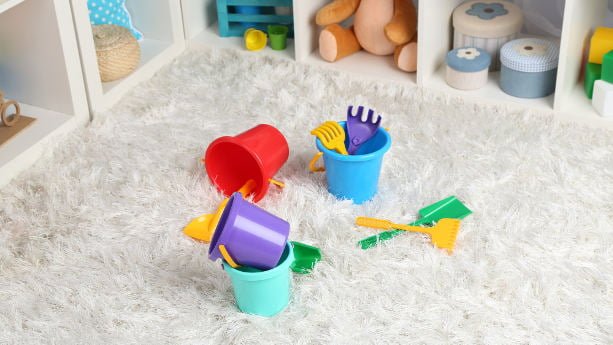
What is ASTM F963-23 testing?
ASTM F963-23 is a toy safety standard developed by the ASTM, which is also incorporated by reference into Part 1250. As such, testing according to ASTM F963-23 is mandatory in order to ensure compliance with the CPSIA for toys.
Which products require CPSIA testing?
CPSIA testing is required for children’s products (intended for 12-year-olds or younger) sold in the United States. Here are some examples:
- Toys
- Children’s clothing
- Pacifiers
- Baby feeding bottles
- Other feeding articles for children
- Children’s furniture
Is testing according to CPSIA and ASTM F963-23 mandatory?
Testing according to one or more children’s product safety rules is required for children’s products in the United States.
Whether or not you need ASTM F963-23 testing depends on whether you sell toys or not. If yes, then ASTM F963-23 testing is required.
CPSIA Testing Frequency
This section breaks down when and how often you need to arrange CPSIA testing.
| Event | Description |
| Initial testing | 1. Initial certification testing is required when you launch a new product.
2. This is required even if the factory is already producing similar products. |
| Product changes | You must test your product again in case you make changes to any of the following:
|
| Rule or standards update | Children’s product safety rules and standards can change over time. This means that you must arrange re-testing for products sold once these come into effect.
For example, ASTM F963-17 was replaced by ASTM F963-23. |
| New rule or standard | The CPSC can implement new children’s product safety rules and standards incorporated by reference that apply to your product. Testing according to new requirements is required if that occurs. |
| Periodic testing | You cannot rely on a single test report forever, even if nothing changes. The CPSC requires that you establish a periodic testing program to test your product every 1, 2 or 3 years.
The correct frequency generally depends on how much control you have over the production facility. |
How much does CPSIA and ASTM F963-23 testing cost?
There is no fixed CPSIA and ASTM F963-23 testing cost. Instead, the testing cost depends on the following factors:
1. The number of materials
2. The number of colors
3. Risk factors (i.e., small parts, sharp points)
4. Age groups (can trigger specific requirements)
5. Functionality
6. Components (i.e., button cell batteries and magnets can trigger additional testing requirements).
I would say that most of our customers pay somewhere between 500 and 1800 USD per product. The simpler the product and its construction, the lower the testing cost.
Case Study A: Wooden blocks
Large wooden blocks with a surface coating are of a single material composition and contain no small parts.
Testing cost estimate: 400 to 800 USD
Case Study B: Electronic Dinosaur Toy
A dinosaur toy containing button cell batteries and multiple parts that require testing according to small parts requirements is more complex. This also results in a more extensive testing procedure that the labs charge for accordingly.
Testing cost estimate: 1500 to 2500 USD
CPSIA and ASTM F963-23 testing companies
Testing according to CPSIA and ASTM F963-23 can only be done at CPSC-accepted testing companies. If you use any other testing company, then the test report is not valid.
Here are some examples of companies operating labs that are CPSC-accepted:
- QIMA
- TUV Rheinland
- Intertek
- SGS
- Eurofins
How to book CPSIA and ASTM F963-23 testing
This section explains how you can find labs and manage the testing process.
Step 1: Find a CPSC-accepted testing company
You can search for CPSC-accepted labs covering certain children’s product safety rules in the database.
Step 2: Request a CPSIA testing quotation
You should provide the following information when requesting a quote:
- Product name
- Description
- Bill of materials
- Functions
- Age group
- Product image
You can normally expect a quotation within a few days.
Step 3: Submit samples
Once you have approved the quotation, you can submit samples to the testing facility. You must normally confirm the following:
- Booking number
- Lab address
- Contact person
Step 4: Obtain test report
The testing company will issue a test report once the testing process is complete.
FAQ
What should I do with the CPSIA test report?
The test report serves as evidence that your product is CPSIA compliant. It must also be referenced in the Children’s Product Certificate (CPC).
In fact, you cannot even issue a Children’s Product Certificate (CPC) without a CPSIA test report.
How long does CPSIA testing normally take?
The testing process can take anything from 1 to 3 weeks, depending on the complexity of the children’s product being tested.
How do I know which children’s product safety rules to test for?
You can find lists of children’s product safety rules on the CPSC website. You can also ask a testing company to help you determine which children’s product safety rules apply to your product.
Doing so is something I strongly recommend, as testing companies tend to have staff who are experts in assessing which children’s product safety rules apply to products.
How do I know which ASTM standards to test for?
You can find information about ASTM and other standards that are incorporated by reference in the eCFR.
Note that not all children’s product safety rules incorporate standards by reference.
Is ASTM F963-23 testing mandatory for all children’s products?
No, only if your product is covered by Part 1250. Note that CPSIA is not only for toys but covers all other children’s products as well.
How do I make sure that my product is CPSIA or ASTM F963-23 compliant in the first place?
You must first read through the applicable parts on the eCFR, where you can find information about technical requirements. These must then be implemented into your product design files.
For example, this could be a matter of redesigning your product to ensure that it does not contain small parts or sharp points. You can also access free read-only versions of ASTM F963-23 via the eCFR, where you can dig deeper to find the requirements in the actual standard.
Note that requirements in both applicable children’s product safety rules and ASTM F963-23 must be taken into consideration.
Do I need to get the CPSIA test done in the United States?
No, you don’t necessarily need to get your product ASTM and CPSIA tested inside the United States. However, the lab must be accepted by the CPSC for the test report to be valid. If not, you’re just wasting your money.
Can I have the product CPSIA tested in China?
Yes, as long as the lab is CPSC-accepted. Essentially, all major American and European testing companies operate CPSC-accepted facilities in China. Examples include UL, SGS, Intertek, and TUV Rheinland.
China is the leading exporter of toys and children’s products, which is why many US importers choose to have their products tested there. Working with a lab in the same country as your factory makes it faster and more affordable to deliver samples.
Can I use a CPSIA test report from my supplier?
You can normally not use a test report issued by your supplier for the following reasons:
1. The test report must be valid for the same production lot or batch that you import and sell in the United States. As such, pre-existing test reports valid for previous production runs cannot be applied to your product batch – even if it’s the same product, material, and supplier.
2. The test report company name must match your company name, as you also need to issue a Children’s Product Certificate. A test report issued in your supplier’s name cannot fulfill that requirement.
Some importers make the mistake of using old and outdated lab test reports provided by their suppliers, sometimes not even applicable to the same product.
At what stage should we book CPSIA lab testing?
The lab test must be performed on a product that represents the product you sell in the US. Hence, you must collect samples from a mass-produced batch of items rather than pre-production samples or prototypes.
That being said, lab testing pre-production samples according to applicable CPSIA requirements is often a good practice, for the sake of verifying that the design of your product is inherently compliant.
Some brands do partial CPSIA testing for this reason, which is followed up with a “final” CPSIA lab test on batch samples before shipment.
The last thing you want to do is enter mass production based on a design that is destined to fail CPSIA lab testing due to built-in design flaws.
Do I need to test all the products?
Yes, you need to test each SKU (e.g., product design or model) that you import and sell in the United States. This also applies to different variations of the same product, such as products with different dimensions, materials, or colors.
As such, you need to ensure that each variation of your products is lab tested. This also makes CPSIA compliance testing more expensive, as lab tests must be repeated. That said, there is no way around this.
Do I need to test my products each time we place an order?
While you don’t necessarily have to test every single order, you must get the first production run tested. Further, you must also create a testing plan that takes the following into consideration:
1. Testing routine in case a product fails the lab test
2. Standard testing frequency (in case of no failed lab tests)
In short, you cannot rely on a single test report forever. The CPSC guidelines also recommend that importers who lack insight into the manufacturing process and material procurement get every single production run lab tested.
What happens if our product fails CPSIA lab testing?
In that case, you cannot sell the product. Your next course of action is to investigate what went wrong and make adjustments. This can consist of the following:
1. Replace non-compliant materials and components
2. Adjust product design
However, it is often not technically and economically viable to make changes. For example, if it turns out that the fabric of a baby romper contains excessive amounts of lead, then the product cannot be made to comply. Likewise, a molded plastic toy that contains small parts is inherently non-compliant by design.
As such, remaking the product is often the only option.
Does Amazon require CPSIA test reports?
Yes, Amazon is strict when it comes to verifying that toys and other children’s products sold on its US marketplace are fully compliant with CPSIA. Amazon normally requires that you submit your CPSIA lab test report, together with your Children’s Product Certificate (CPC).
Further, Amazon also requires that the children’s product safety rules and ASTM standards listed on the test report match those listed on the CPC.
The company name listed on the test report should generally also match that of the CPC.
Do I need to get my product tested if it’s already sold in the United States?
It doesn’t matter if “the same” or “similar products” are currently sold in the United States – even if these originate from the same manufacturer (which is unlikely). It’s by definition not “the same product” unless it’s an item from the same batch.
There can be differences in terms of construction and materials, even if these “similar products” are of the same model and original manufacturer. These are factors that can impact the general safety and substance contents of the product, both of which ultimately decide whether the product is CPSIA compliant or not.
Yet, some importers assume that they can skip CPSIA lab testing simply because other companies are selling comparable products. That’s not how it works.

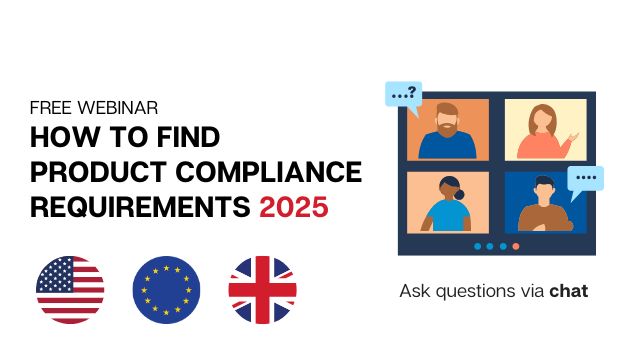



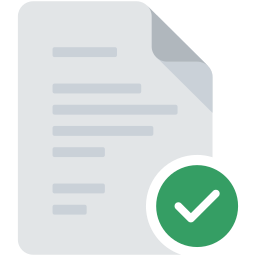

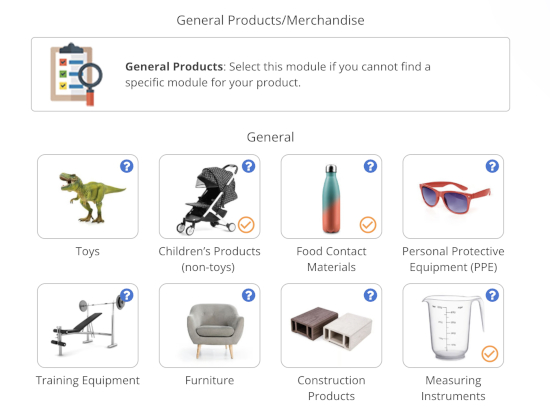






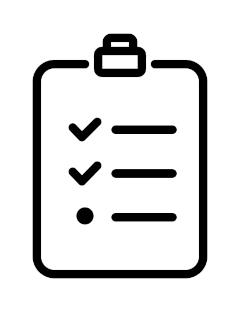

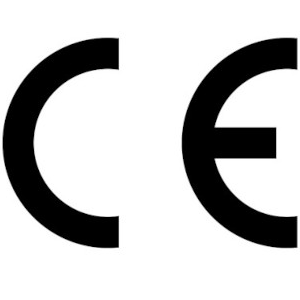




.png)
.png)
.png)

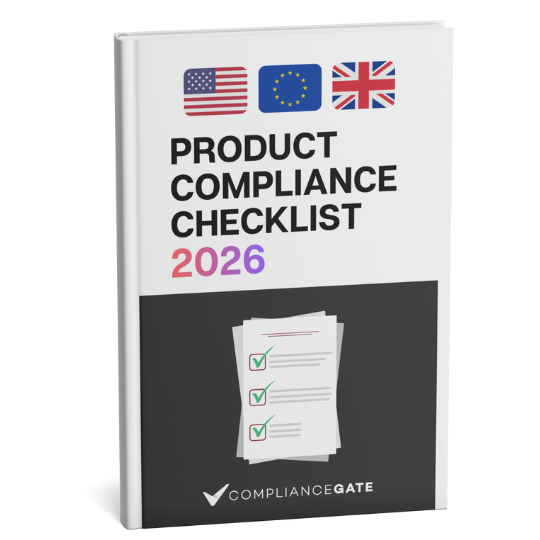
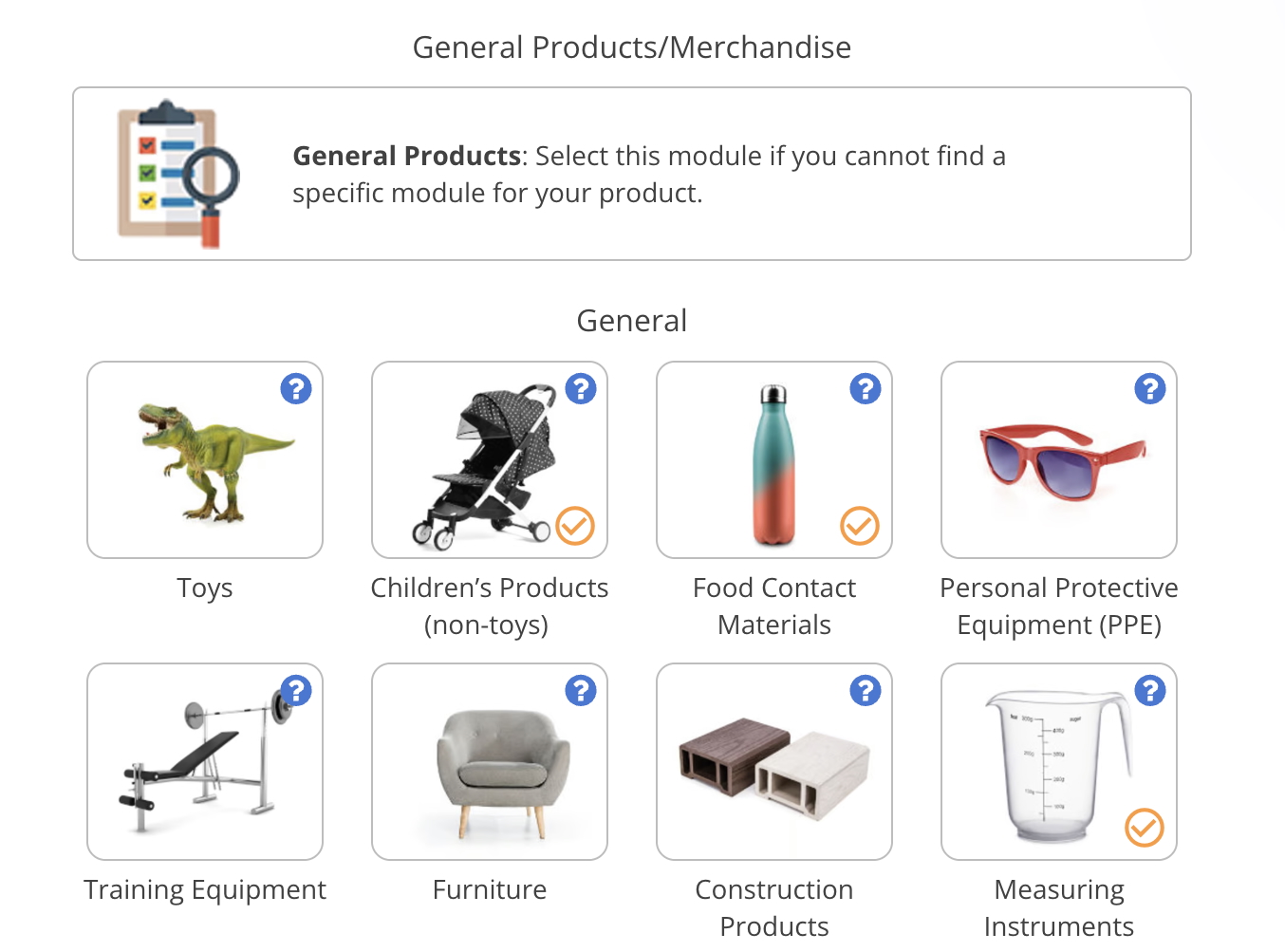



I am making wooden toys and have over 100 colors in over 300 items. However, all 100 colors are made from 15 base colors. Could i test 15 base colors instead of all 100 colors paints to save cost?
Hello Justin,
I think the CPSC said something like that in their CPSIA testing FAQ. Unfortunately I cannot find it anymore.
Children Product Test REports is valid for one year? and need to renew yearly?
Hello Fredrick, thanks for your video and comprehensive explanation. I intend to sell on Amazon a plush toy. In this case, do you know if is required/mandatory to get the uniform label register number required by the state of Pennsylvania, Ohio and Massachusetts? Kind regards
If sale blue shirt with various colored print will they test just blue shirt or do they include the print?
Hi Shannon,
The print should normally be included in the testing process as well.
Hello,
I am a disabled guy that makes a few wooden toys how to I get a CPC. Thanks for your help
Hello Brian,
I suggest you read this:
https://www.cpsc.gov/Business–Manufacturing/Small-Business-Resources/Small-Batch-Manufacturers-and-Third-Party-
Hi Fredrik,
We have tracking label on all products, and all products tested accordingly.
We put: “Meets ASTM F963” in writing on packaging, but can we just cancel this? – as we are having space problems on the packaging…
Hi Eddy, Great video. You mentioned getting the batch number tested before it’s shipped. So are you saying for example ..pay the factory for the batch to be produced. Have a CPSIA approved lab in China take random samples from the batch before sending? Also, would it be normal to send to the USA without testing, but then have it tested once in USA?
Hi Fraz,
It would be very risky to send to the US without testing. For starters, I think the CPSC requires that you have a test report upon entry. Even if that was not required, you would risk finding that the batch is non-compliant when it’s too late to do anything about it!
I have a product that I am manufacturing in Thailand and I need ASTM/CPSC tests done. Do you do the testing or can you recommend a company that does.
Hi Nick,
You can find a list here: https://www.cpsc.gov/cgi-bin/labsearch/
Hello Fredrick,
I bought 1000 set of wooden alpha numeric puzzle in 2019 to sell in amazon but now amazon blocked this product asking for
“ A third-party test report from a CPSC-accepted lab that shows the product meets ASTM F963-16/17 and CPSIA standards.” How do I get this report? Can I test this from United State? Please let me know.
Thank you
Sujan
You need to book a lab test with a CPSC accepted testing company. You will also need to issue a CPC and ensure that the products are correctly labeled.
I am manufacturing a product an understand that it must undergone Third-party testing to verify that it conforms to a certain ASTM/CPSC standard. I also understand that each product style must be tested from each batch production. Does that mean that I’ll produce in bulk, then get it tested? If it doesn’t pass for whatever reason I have a bulk order that doesn’t comply. Can you please confirm that is the expected process?
Hi Lucy,
1. Yes, I think CPSIA requires batch testing (e.g. sample from the mass-produced batch)
2. Well, you may want to also test pre-production samples made using the same material and a 100% matching design/construction to verify compliance before you start your first production run
Hi Fredrik,
if i am looking to create a toy bundle to be sold on Amazon, and the toys within the bundle are manufactured by different suppliers in China(eg. one is a wooden toy, the other is a kids costume to be included in the bundle) – based on your knowledge, how should this be tested? (send the complete product bundle to the testing lab or do they need to be tested separately? since one is a wooden toy and the other is a costume). Thanks mate, cheers.
Hi Jack,
Personally, I would try to get it on the same test report – or at least test reports issued by the same company on the same date.
Hi Fredrik,
For sports equipment like Hockey sticks, Would flammability testing be required?
Hi Ahmed,
You need to ask a lab
Hello Fredrik Gronkvist
I’m interested in testing product is kid shirt
according to standard ASTM F963 16/17 and standard CPSIA
I’m not sure that what is full standard of testing CPSIA for kid shirt ?
Dear Mr. Fredrik
This is Mr. Park who is working for 3rd party testing lab in Korea.
I was wondering if we need to get textile parts of stuffed toys tested for heavy metals(8 elements). I am confused because it is not metal parts.
Have a nice weekend.
Thank you
Hi Doeui,
Heavy metals are not only found in metal parts.
Hi Mr. Fredrik,
A Korean manufacturer want to sell stickers for kids through AMAZON.
I was wandering if the stickers are subject to toy products.
Thank you
Hello Doeui,
Yes. I suggest you read this: https://www.cpsc.gov/Business–Manufacturing/Business-Education/childrens-products
Do children’s pajamas require physical and mechanical testing?
Hi Ben,
You need to ask that directly to a lab.
My toy product have ASTM F963-16 and CPSC approved test.
Do i need ASTM F963-17 test although the revisions are not influence my toy?
Hi Yossi,
Only a lab can confirm that
Hello Yossi, I just saw your question when I was browsing the internet and I wanted to answer it. You will need to retest your products to the new standards. In fact, the US Federal Law requires your products to be tested yearly unless you have a documented and executed Testing Plan. Roger at AMTesting
Thank you for the information.
Can you please advise with the following:
Am I required to place a label on all my plush animals I am manufacturing in order to sell them? As in the one that state’s CE? Or will the lab test documents sent to Amazon be sufficient.
Hi Natalie,
Assuming you sell in the US you’ll need a CPSIA tracking label: https://www.cpsc.gov/Business–Manufacturing/Business-Education/tracking-label
Hello Frederik,
Got to start by thanking you for this informative article. I am about to launch my new all-wooden toy (contains water-based paint in different colors) on Amazon and I am a little confused with all this terminology. Would the CPSIA test differ from ASTM F963? When asking for a quote for ASTM F963, would that quote already include the CPSIA certification automatically or should I be concerned about looking for two different tests? My supplier seemed kind of unaware about the CPSIA when I brought it up to our conversation as they already gave me a specific quote for ASTM F963 of $621.00.
Hi Jorge,
CPSIA references certain ASTM standards, such as F963. CPSIA is more than ASTM compliance and testing though, as it also covers labeling and the CPC.
No, most testing companies don’t include the CPC or tracking label as part of the quote.
Hi,
When amazon is asking for manufacturer name and address are they wanting mine as the amazon seller or the manufacturer in China’s name and address ?
Likely you as the Amazon seller
hey, my product is a desk toy box, i mainly target offices but have marketed to kids….can i just change my minimum age to 15 to avoid all this?
Hi Alan,
I don’t think so.
This is one definition according to the CPSIA:
“- Whether the product is commonly recognized by consumers as being intended for use by a child 12 years of age or younger. ”
https://www.cpsc.gov/Business–Manufacturing/Business-Education/childrens-products
Your statement : No, you cannot use a test report issued by your supplier does not agree with what the CPSIA website states.
CPSIA website … “…allows importers to use a foreign manufacturer’s test results or their component part or finished product certifications of a children’s product to issue their own Children’s Product Certificate, as long as the importer exercises due care to ensure the validity of the test results or the certificate and receives the documentation required by the rule.”
https://www.cpsc.gov/Business–Manufacturing/Testing-Certification/Third-Party-Testing/FAQs-Certification-and-Third-Party-Testing
Also, your statement “The test report company name must also match your company name, as you also need to issue a Children’s Product Certificate. A test report issued in your supplier’s name cannot fulfill that criterion.”
Can you please provide to source to this? Because if the test report is in the manufacturer’s name, but the CPC is in YOUR company’s name, these names don’t match. But that shouldn’t be an issue?
Unless Amazon’s stipulations differ from the CPSIA stipulations (are more strict), than I’m confused as to where the two above stated stipulations are from? Please let me know, as I am an Amazon toy seller!
Hello Kristina,
1. Theory and practice are different. This only works if there is a pre-existing lab test report for that same batch, which simply doesn’t happen for small businesses.
2. Amazon can reject test reports and CPCs not matching for many reasons. Any mismatch in the listed tests, SKU, or company can result in that.
For a plastic toys, we want to make sure our toys were tested and made sure it non toxic, bpa free, phthalate free and lead free.
Would you mind giving us a quote for that specific test?
1 – CPSIA (15 USC 1278a) – Lead in accessible substrate materials
2 – CPSIA (16 CFR 1307) – Phthalates
3 – 4.3.5.2 (ASTM F963-17), Toy Substrate Materials – Total Lead & Soluble Test for Metals
4 – 4.2 (ASTM F963-17), Flammability
5 – ASTM F963-17, Mechanical and physical properties?
Hi She,
You can request a free quote here: https://www.compliancegate.com/lab-testing/
Hi Fredrik, thank you for sharing this informative article. I try to get my head around US guidelines for toy testing, and a lot of information I have been reading might have been outdated? Is it correct that toy testing in the US was voluntary previously? Since when is it Mandatory for the US for toys to be tested by a third party?
During my research, my understanding is that Australia has mandatory toy testing but this can be either done in house or external.
I am looking forwards to your response.
Kind regards Jude
Hi Jude,
I have no idea if it was voluntary before CPSIA.
Hi Fredrik
Do I need to formally identify every product sample SKU to the Lab? For example when the samples are delivered do i tell them in a note: included is SKU1, SKU2 etc? Do they include this in the lab report or do they just use a general description of the item?
many thanks, very useful!
Hi Andrey,
Glad you found it useful!
I am looking to sell and donate to charity wooden toys. I understand that it has to be CPSC certified however, I am individual not a company or make enough to be a small batch person. Is there any certification that and individual that would possibly make one to two hundred to sell and donate? They would be toy cars, wood would be maple, pine, purple heart or combination, Titebond II wood glue for adhesive and mineral oil finish (food safe). I have gone through the CPSC numerous times and have not found anything that addresses individuals.
Hi Stephen,
I don’t think individuals are exempt. You must still ensure that the products you import are safe and compliant. There are some testing exemptions, but the fundamental safety requirements are the same. Third-party testing is the only way to verify if a product conforms to a certain ASTM/CPSC standard.